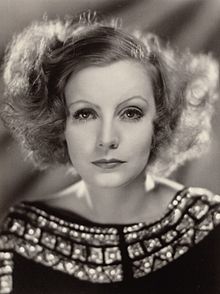And now for something completely different: a review of one of my favourite film books. Enjoy!
“A woman’s intelligence was the equivalent of a man’s penis: something to be kept out of sight.” So writes Molly Haskell in From Reverence to Rape: The Treatment of Women in the Movies: a fusillade of feminist film criticism that’s as brilliant as it is bold.
It’s been almost 40 years since Haskell published her survey of women in cinema—not only the characters, but the actresses, screenwriters and directors behind them—and the book remains a classic, an anti-chauvinist reading of six decades of Hollywood (and European) filmmaking.
Haskell marshals a range of films to convince readers that women have been systematically marginalized in Western society—held in check by a patriarchal authority which the Women’s Liberation Movement was beginning to challenge. Influenced by that movement, the book charts the trajectory of female characters on film: the vamps, flappers and fragile flowers of the 1920s; the anodyne sexpots of the 1950s; and the more ambivalent figures of the 1970s and 80s.
Like a camera lens, it pans over great swathes of film history, zooming in on particular artists or movies to explore trends. Haskell gets under the skin of the actresses she profiles. On the surface, screen goddesses Greta Garbo and Marlene Dietrich projected similar personas. Both were foreign beauties with exotic accents (Garbo’s Swedish, Dietrich’s German) and the heady air of mystery. Yet Haskell demonstrates that their images were actually quite distinct: Garbo’s was founded on the pursuit of eternal love; Dietrich’s on love in the here and now.
Haskell’s prose is always eloquent and authoritative, interweaving academic discussion with the sort of commentary you would hope to get from a witty, well-informed friend. She is fond of philosophical asides and can be pedagogical, but never dull.
The book’s most famous addition to feminist scholarship is the chapter on Woman’s Pictures: three-handkerchief weepies that excel in putting audiences through the emotional wringer. “At the lowest level, as soap opera, the “woman’s film” fills a masturbatory need, it is soft-core emotional porn for the frustrated housewife.” Haskell writes. Yet she doesn’t dismiss these films. They were designed expressly for the female American market and Haskell uses them to identify the “collective drives, conscious and unconscious, of American women”—particularly the fixation on children and motherhood.
If women are all too eager to accept the limiting fictions thrust upon them, then so too are men. Haskell decries the buddy movies in which male bonding deliberately excludes women, referring to the resultant ‘bromance’ as merely the love of “one’s mirror reflection.”
However the book is by no means anti-male. Haskell applauds onscreen pairings which are true partnerships. For her, the relationships of the titular Pat and Mike and of Steve and Slim in To Have and Have Not are like the pedagogical romances in Jane Austen’s novels: men and women are free to not only love, but learn from each other.
Some of Haskell’s most sparkling passages are also devoted to a man: German émigré director Ernst Lubitsch. Lubitsch specialized in musicals and comedies in the 1930s and 40s, imbuing them with a sly sophistication still known as ‘the Lubitsch touch’. Haskell examines the love triangles in Trouble in Paradise and Design For Living as symbols of a person’s shifting identity, and describes the films with such enthusiasm that you feel compelled to watch them immediately.
The book is overly militant at times—Haskell’s conviction that the mother’s purity in cinema is an Oedipal image seems particularly forced. However such lapses are rescued by wonderfully idiosyncratic observations: on the basis of Butch Cassidy and the Sundance Kid, Robert Redford and Paul Newman are “on their way to becoming the Myrna Loy-William Powell of the seventies.”
In explaining how she can look past certain aspects of a film to enjoy the greater whole, Haskell writes, “The fact that I consider myself a film critic first and a feminist second means that I feel an obligation to the wholeness and complexity of film history. It means that art will always take precedence over sociology, the unique over the general.” It is this same passion for film which ensures From Reverence to Rape is not a dry, academic text, but rather a fresh, fun journey through women’s lives on film.

Leave a Reply